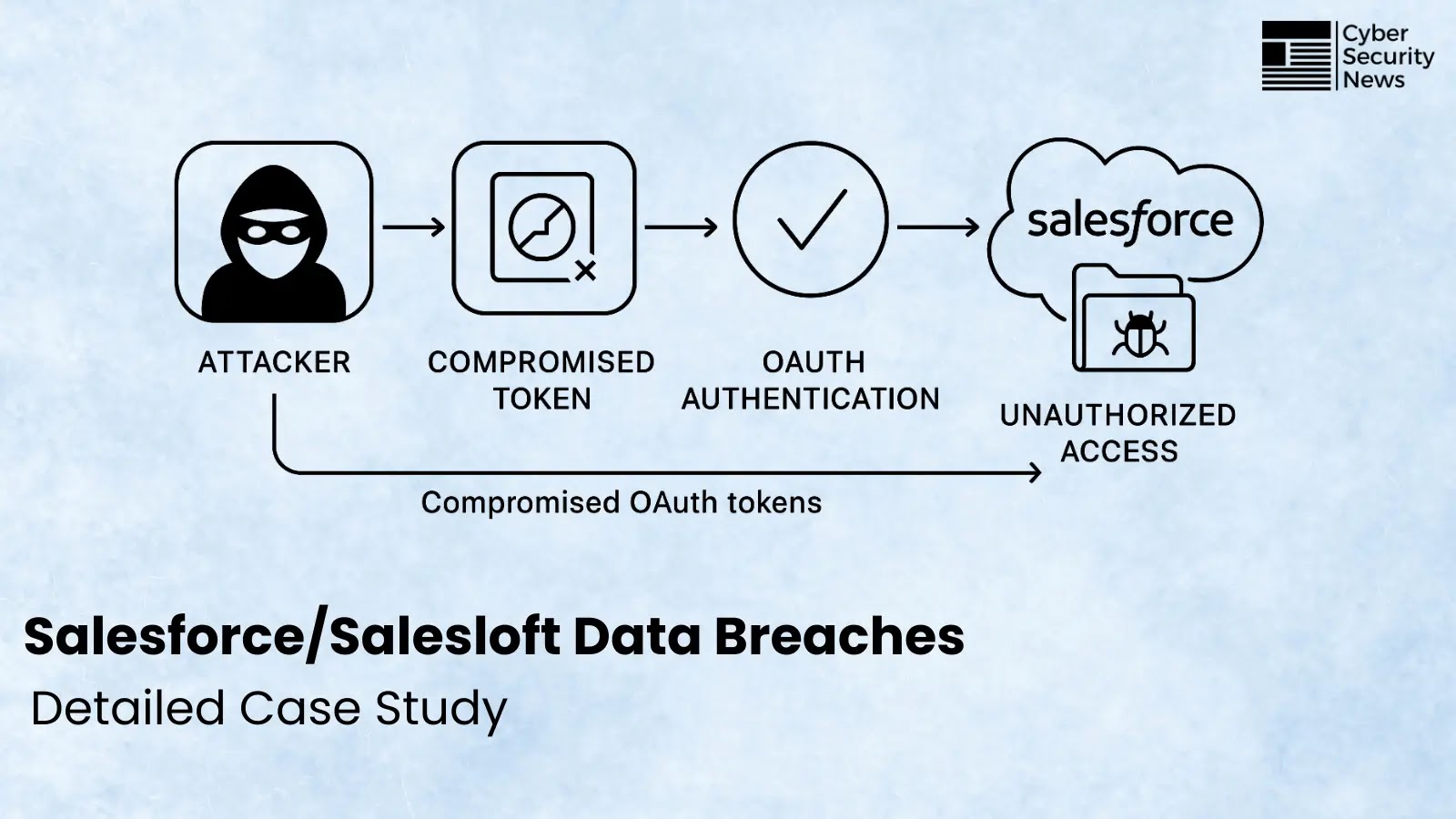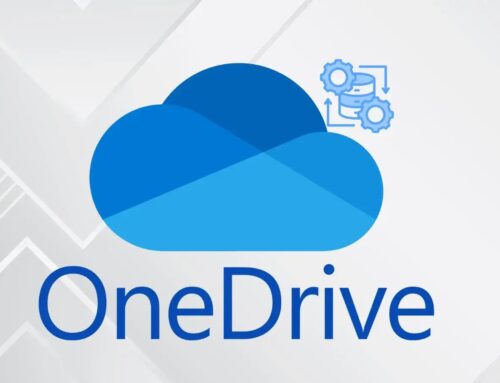
Lessons from Salesforce/Salesloft Drift Data Breaches – Detailed Case Study
Unpacking the Salesloft/Salesforce Drift Data Breaches: A Supply Chain Security Reckoning
The cybersecurity landscape continuously shifts, presenting new challenges and exposing vulnerabilities in even the most trusted systems. The August 2025 Salesloft Drift data breaches serve as a stark, recent reminder of this reality. This incident, a highly sophisticated supply chain attack, cascaded from a single compromised integration into widespread organizational exposure, profoundly impacting over 700 organizations, including Salesforce. For cybersecurity professionals, IT leaders, and developers, understanding the intricacies of this breach is not merely academic; it’s a critical step in fortifying future digital defenses.
The Anatomy of an Attack: UNC6395 and OAuth Token Abuse
At the heart of the Salesloft Drift incident was the advanced persistent threat (APT) group, UNC6395. This group orchestrated a highly coordinated campaign that exploited fundamental weaknesses in OAuth token management. OAuth, an open standard for access delegation, allows users to grant websites or applications access to their information on other sites without giving them their password. While designed for convenience and security, misconfigurations or vulnerabilities in its implementation can turn it into a potent vector for compromise.
UNC6395 leveraged these vulnerabilities to gain unauthorized access. The precise method of initial compromise for the OAuth tokens is still a subject of ongoing analysis, but it likely involved phishing tailored to obtain consent for malicious applications or exploiting known flaws in the OAuth process within the target SaaS platforms. Once acquired, these tokens granted UNC6395 persistent access to sensitive data, bypassing traditional password-based authentication and gaining a foothold deep within the supply chain.
The Cascading Effect: Supply Chain Attack and SaaS Integrations
The Salesloft Drift breach exemplifies the inherent risks within interconnected SaaS ecosystems. In today’s highly integrated enterprise environments, organizations frequently link numerous SaaS applications, such as CRM, marketing automation, and communication platforms. While these integrations enhance efficiency, they also create a complex web of dependencies. A compromise in one vendor, particularly one serving as a critical piece of infrastructure or data aggregation (like a marketing or sales engagement platform), can have far-reaching implications.
The breach highlights how a single point of failure – in this case, a compromised integration channel – can trigger a domino effect. The attackers didn’t need to breach each of the 700+ organizations individually; compromising the upstream SaaS provider (Salesloft and Drift) and abusing their integrations provided a direct conduit to the downstream customers’ sensitive data. This underscores the critical importance of vetting third-party vendors and understanding the security posture of every link in your digital supply chain.
Key Learnings: Beyond the Headlines
- OAuth Security is Paramount: The incident clearly demonstrates that OAuth tokens, if compromised, can be as dangerous as stolen credentials. Organizations must re-evaluate their OAuth implementations, consent flows, and token lifecycle management.
- Supply Chain Risk Management: This breach reinforces the necessity of robust third-party risk management programs. Due diligence must extend beyond basic security questionnaires to include continuous monitoring and validation of vendor security practices.
- Integration Security: Every integration point between SaaS applications represents a potential attack surface. Granular permissioning, least privilege principles, and continuous monitoring of integration activity are essential.
- Early Detection and Response: The ability to quickly detect anomalous activity related to API calls, token usage, and data access is crucial for containing breaches and minimizing damage.
Remediation Actions: Fortifying Your Defenses
In the wake of such a significant breach, organizations must take proactive steps to mitigate similar risks. The following remediation actions are critical:
For OAuth and API Security:
- Review OAuth Consent Flows: Regularly audit and restrict OAuth application permissions to the absolute minimum necessary. Educate users about the dangers of approving suspicious OAuth requests.
- Implement Token Revocation Policies: Ensure immediate and effective token revocation mechanisms are in place for suspicious activity or employee departure.
- API Security Gateways: Utilize API gateways to enforce security policies, rate limiting, authentication, and authorization for all API interactions, including those with third-party integrations.
For Supply Chain and Third-Party Risk Management:
- Enhanced Vendor Due Diligence: Go beyond standard questionnaires. Request detailed security reports (e.g., SOC 2, ISO 27001), pentest results, and incident response plans from all critical SaaS providers.
- Contractual Security Clauses: Include explicit security requirements, audit rights, and incident notification obligations in all vendor contracts.
- Continuous Monitoring of Third-Party Access: Implement solutions to monitor and alert on unusual activity originating from, or directed towards,, third-party integrations.
For Internal Security Posture:
- Zero Trust Architecture: Embrace a Zero Trust model where no user or device is inherently trusted, regardless of their location. Verify everything.
- Principle of Least Privilege: Enforce the principle of least privilege for all users and applications, minimizing the potential impact of a compromised account or token.
- Security Awareness Training: Continuously train employees on phishing, social engineering, and the importance of secure online practices, especially regarding third-party applications and consent.
- Incident Response Plan Review: Thoroughly review and update your incident response plan to specifically address supply chain compromises and SaaS breaches.
Leveraging Tools for Enhanced Security
Implementing the above remediation actions often requires the aid of specialized security tools. Here’s a selection of relevant tool categories and examples:
| Tool Category/Name | Purpose | Link (Example) |
|---|---|---|
| Cloud Access Security Brokers (CASB) | Provide visibility and control over cloud applications, enforce data security policies, and detect shadow IT. | — (Vendor Dependent) |
| API Security Platforms | Discover, protect, and monitor APIs from various threats, including OAuth token abuse and unauthorized access. | — (Vendor Dependent) |
| Third-Party Risk Management (TPRM) Platforms | Automate and streamline the assessment, monitoring, and management of third-party risks. | — (Vendor Dependent) |
| Identity and Access Management (IAM) Solutions | Manage digital identities and control user access to systems and resources, including strong authentication and access policies. | — (Vendor Dependent) |
| Security Information and Event Management (SIEM) | Collect, analyze, and correlate security event data from various sources to provide real-time threat detection and alerting. | — (Vendor Dependent) |
Conclusion: A Call to Strengthen Digital Resilience
The Salesloft Drift data breaches are a powerful reminder that interconnectedness, while beneficial, introduces significant security challenges. The incident underscores the critical need for organizations to look beyond their perimeter, meticulously audit their SaaS integrations, and scrutinize the security posture of their entire supply chain. By prioritizing robust OAuth security, enhancing third-party risk management, and fostering a proactive security culture, enterprises can significantly bolster their defenses against the evolving tactics of sophisticated threat actors like UNC6395. Digital resilience in the modern enterprise hinges on a comprehensive understanding of these attack vectors and a commitment to continuous security improvement.





